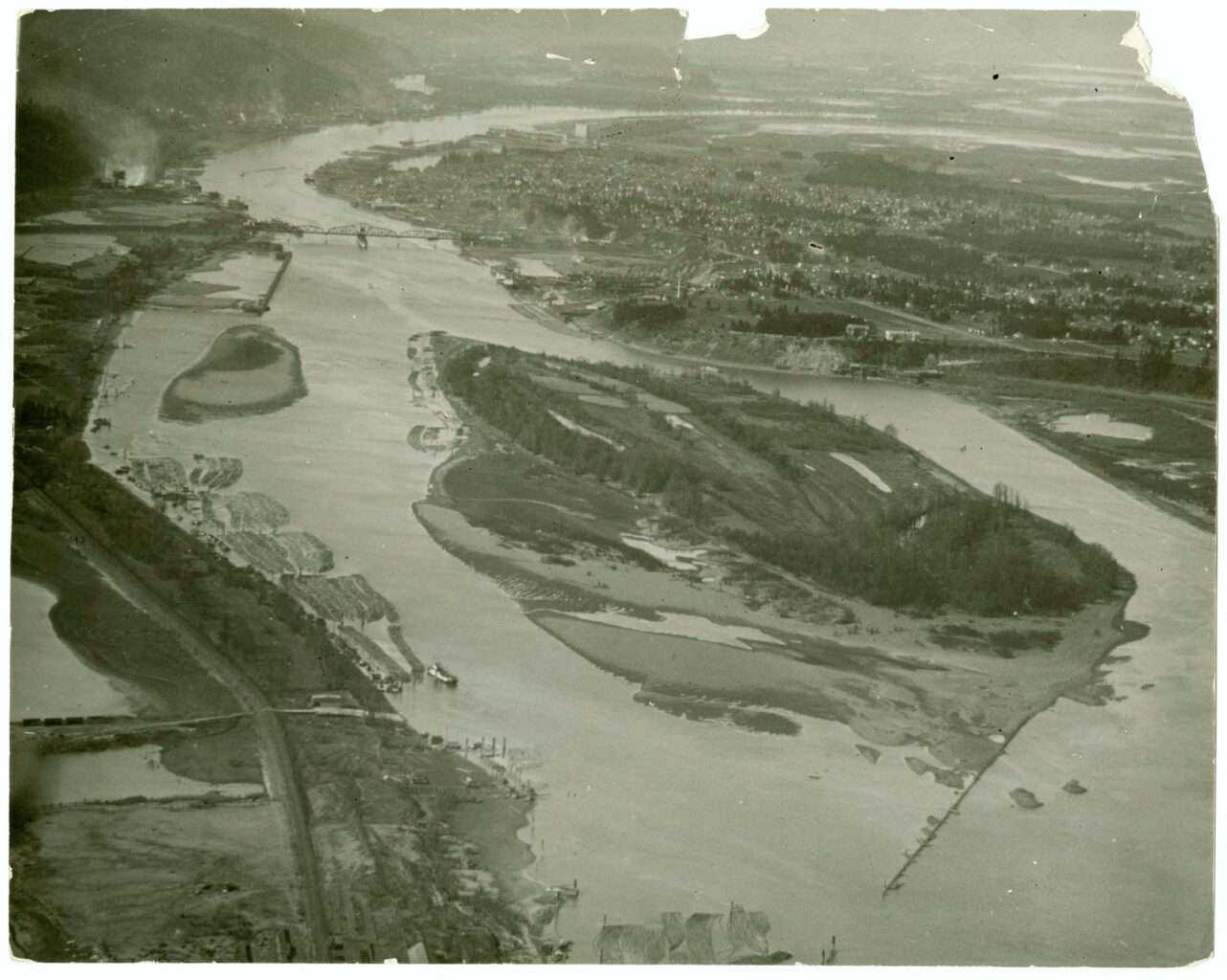
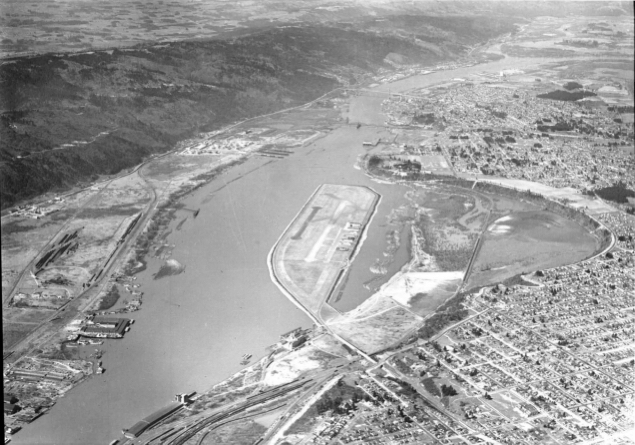
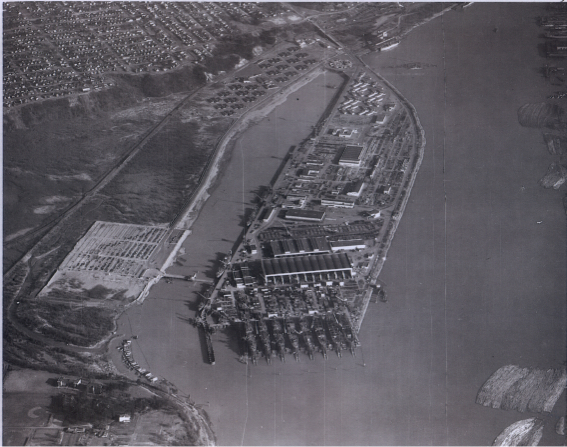
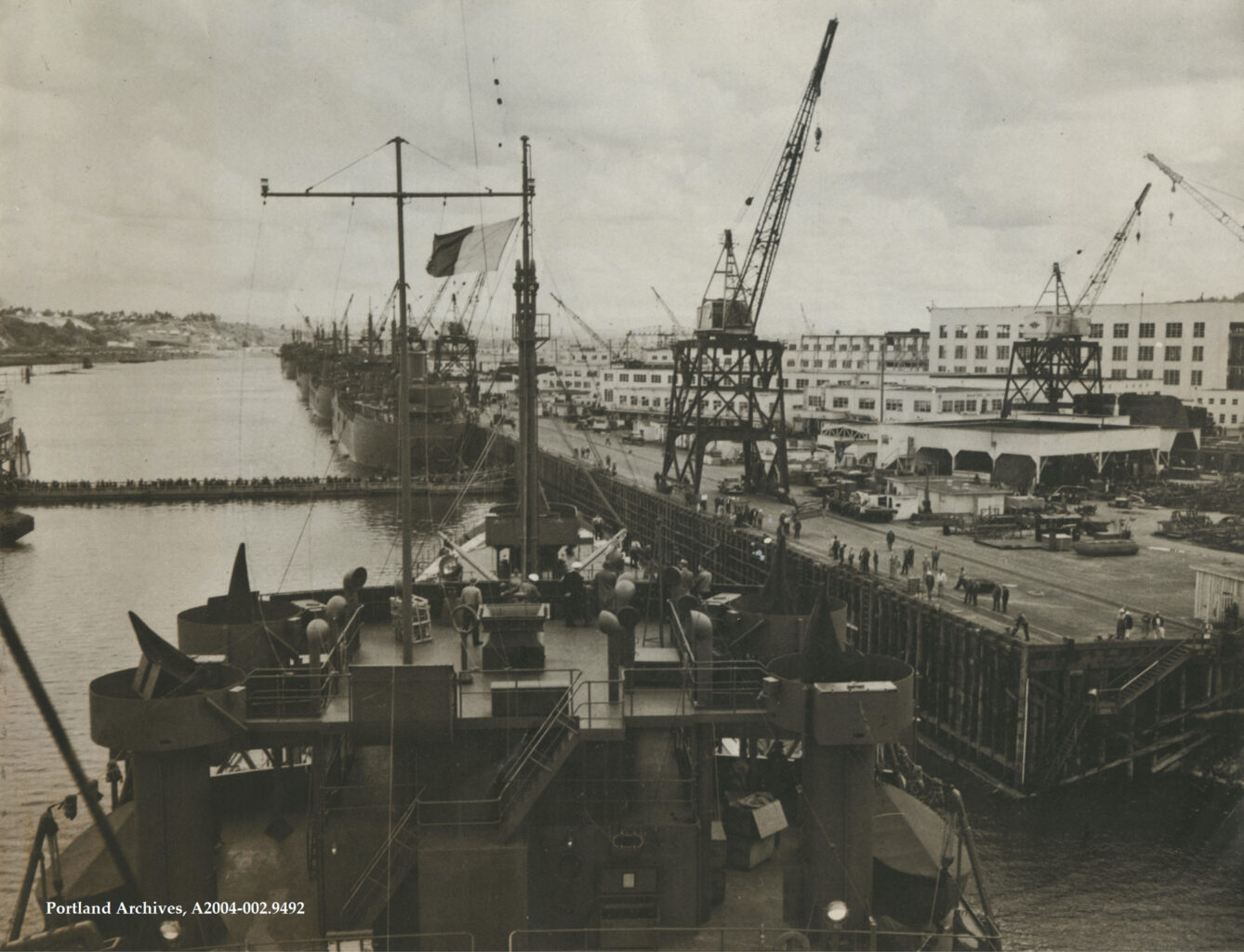
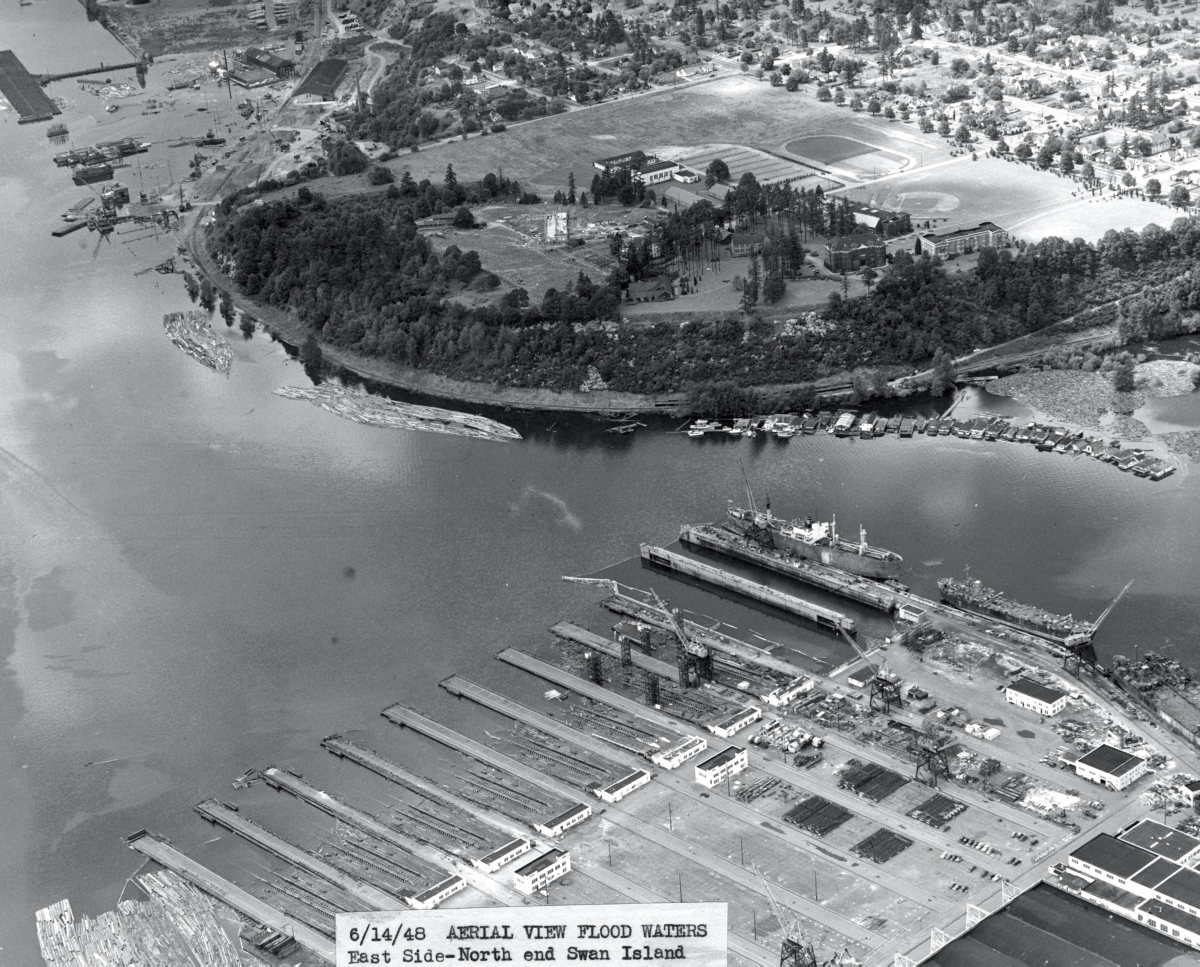
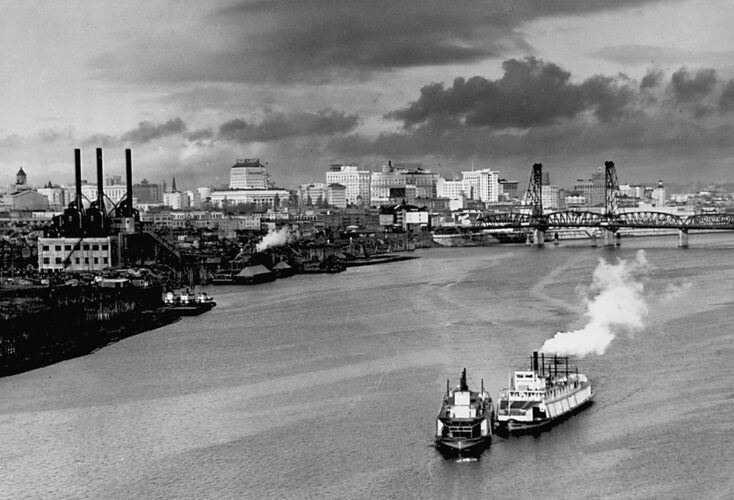
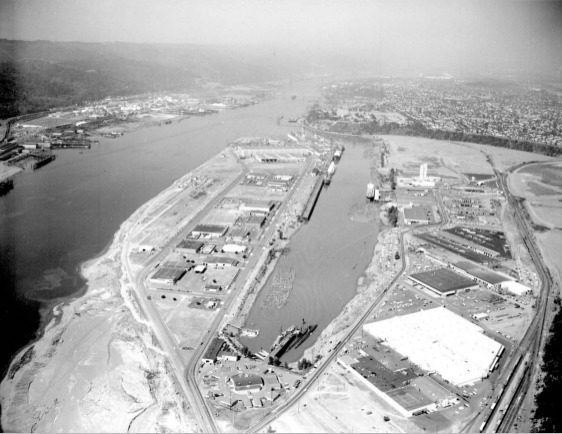
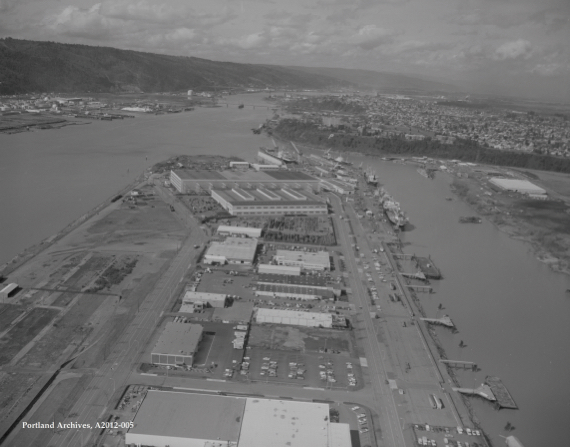
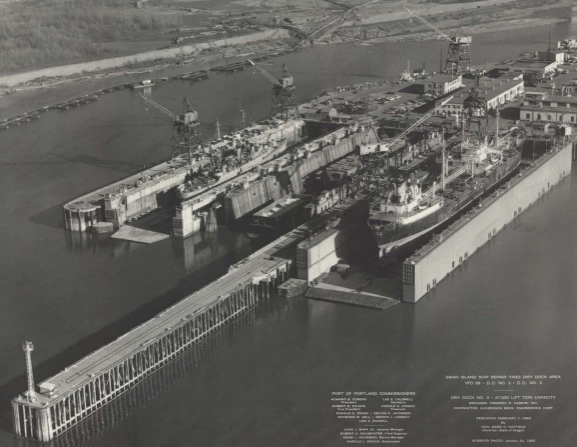
Swan Island has played a significant role in the development of waterborne commerce in Oregon.
Originally an island with channels on both sides, Swan Island was connected to the east side of the Willamette in the 1920s by filling part of the east channel to create a causeway. Swan Island was the original site of the Portland airport until the 1940s.
During World War II, Swan Island was the site of one of the Kaiser shipyards and worker housing. At the request of the United States government, contractor and industrialist Henry J. Kaiser developed a major shipbuilding operation at Portland and across the Columbia at Vancouver, Washington. Between 1942 and 1945, the Kaiser shipyards produced 147 T-2 tankers at Swan Island, making it the Liberty and Victory ship capital of the United States. In all, 455 ships were produced at Kaiser’s Oregon shipyards during World War II. The temporary worker housing created on Swan Island during the war was used to accommodate some of the people displaced by the Vanport flood (an area on the Columbia River which flooded and displaced thousands of mostly African Americans in 1948). Many of those displaced had to remain for up to a year at Swan Island because of the post-war housing shortage in Portland.
After World War II, Swan Island became the center for Port of Portland operations, including dry dock and ship repair facilities. Because Swan Island is centrally located in Portland’s harbor, many industrial operations have developed there, especially operations providing distribution, warehousing, and manufacturing activities.
The Swan Island and the Mocks Bottom area remain hubs for ship repair, industrial distribution, warehousing, and manufacturing activities. (Source: Oregon Encyclopedia)
Swan Island Basin today
Today, Swan Island and Mocks Bottom are home to more than 60,000 direct and indirect jobs, which generate billions in economic value and tax revenues for the region.
The types of family-wage jobs in ship repair, fabrication, manufacturing, shipping and more, form a significant part of the foundation of the greater Portland region’s economy.
The types of jobs generated by Swan Island Basin businesses not only pay family wages, but they also support workers with advanced training and professional degrees, filling a critical need in the community. Harbor dependent jobs provide higher wages and salaries for People of Color and across all education levels (high school through college) than other sectors.
Additionally, the products developed, manufactured, and repaired here support the nation’s infrastructure and national security, as well as shipping and supply chain. Swan Island and Mocks Bottom play a critical role not just in Portland’s success, but also regionally and nationally.
Harbor-wide, business revenues top $12 billion and more than $400 million is paid in state and local taxes. Manufacturing industries are growing faster in the Portland area than the U.S. national average. Many of Swan Island’s manufacturing and shipyard businesses provide job training and partnerships with local higher education and building trade programs.
(Sources: Oregon Encyclopedia, Portland Marine Industrial Land Analysis, Portland Working Harbor Study, City of Portland Economic Opportunity Analysis)






